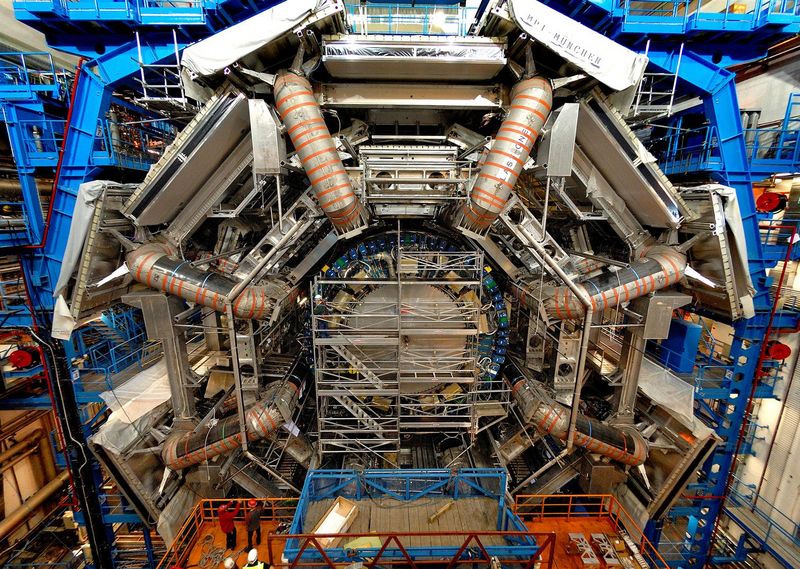Muons are charged leptons like electrons, so they leave a track in the ID, but unlike electrons they do not create a shower in the calorimeter. Instead they pass through the calorimeters (leaving only minimal energy) and then escape the ATLAS detector completely. This sets them apart from all other stable particles (except neutrinos) which all get stopped completely in the calorimeters. So, to identify muons there is an additional detector layer outside of the calorimeters where only muons can reach, called the Muon Spectrometer (MS).
Muon Spectrometer
In order to determine which signatures can be identified as muons, we make use of the fact that they can travel all the way out of the detector. The MS is an additional set of tracking layers that surround the detector. A muon will create a track in the ID, leave a small amount of energy in the calorimeters, and then create a track in the MS. During reconstruction, we can connect the ID tracks with the MS tracks and determine the whole flight path of the muon.
